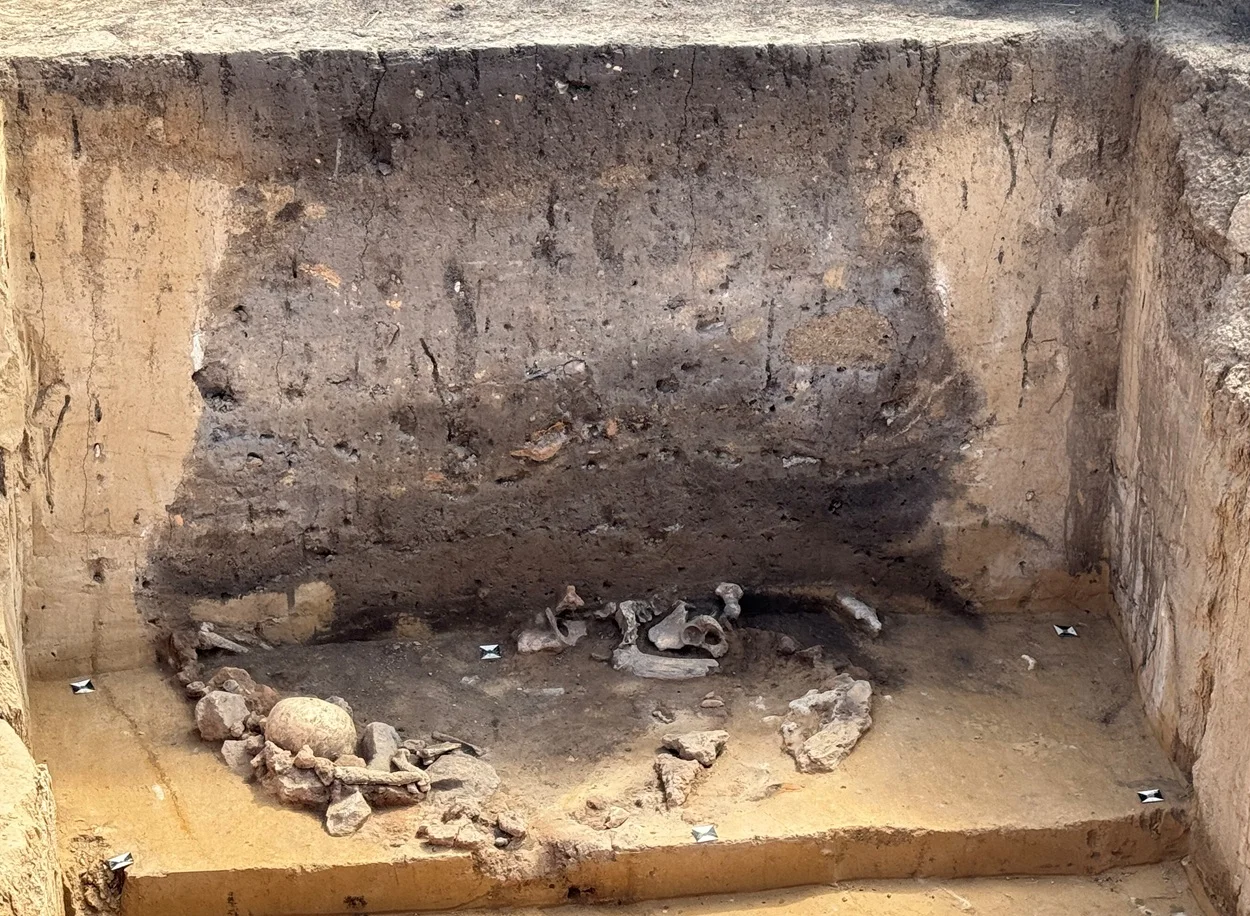Archaeologists have uncovered 5,000-year-old sacrificial pits near Gerstewitz in Saxony-Anhalt, Germany, revealing a haunting glimpse into ancient ritual practices.
Initial studies have associated the pits with the Salzmünde culture (circa 3400–3050 BC), a late group from the Funnel beaker culture in central Saale-Elbe region of Germany.
Known for their unique burial customs, the culture often placed the dead in crouched positions beneath layers of pottery shards and remnants of burnt homes. Many examples of burials show indications of violence or reburial, along with evidence of elaborate and multifaceted rituals involving the dead.
The discovery was made in preparation for the SuedOstLink power line construction, a project closely coordinated between the State Office for Heritage Management and Archaeology Saxony-Anhalt and the energy company 50Hertz.
Near Gerstewitz, researchers uncovered twelve deep, circular pits – each two to three metres wide and up to 2.5 metres deep, enclosed within a ditch system. These pits held charred remnants of buildings, complete ceramic vessels likely used as sacrificial offerings, and bones from both animals and humans.
Particularly striking were the remains of a dog, still in anatomical position and showing signs of fire damage, found beside an intact human skull. The contrasting conditions suggest extended or staged rituals, perhaps involving temporary display or storage of remains before final burial.
One converted oven pit revealed another layer of ritual complexity: the burial of two individuals who had likely decomposed elsewhere before being laid to rest. This points to a deliberate, multi-phase ceremonial process.
The frequency and intensity of these rituals may reflect the social and environmental pressures of the time. Around 3000 BC, Central Europe experienced a climate downturn, and the Salzmünde area came under pressure from the expanding Bernburg culture.
The elaborate ceremonies could represent efforts to invoke ancestral protection during a period of instability and change.
Header Image Credit : State Office for Heritage Management and Archaeology Saxony-Anhalt
Sources : idw







